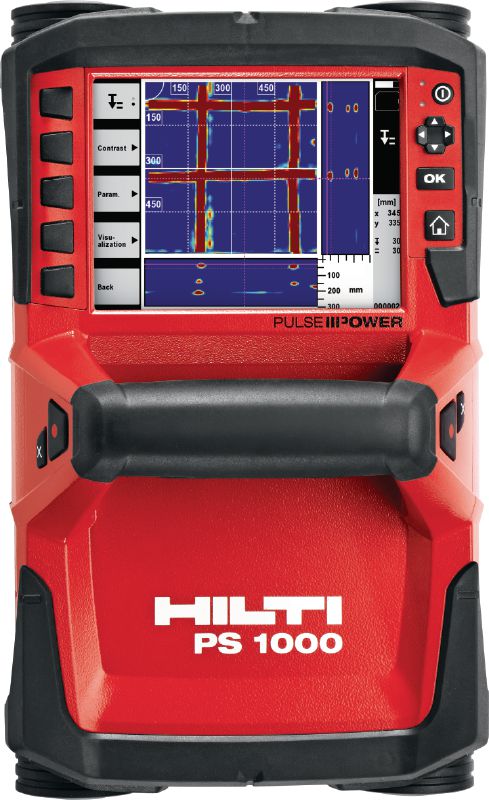Discovering the Midst: A Comprehensive Overview to Concrete Scanning and Its Diverse Applications
In the realm of construction and framework advancement, the precise procedure of concrete scanning holds a crucial role in making certain the architectural integrity and safety and security of jobs. As innovation remains to progress, the applications of concrete scanning have expanded much beyond simple surface-level evaluations. From finding rebar and post-tension cords to mapping out voids and conduits hidden within concrete structures, the capabilities of modern scanning strategies are both impressive and necessary. The real deepness of concrete scanning's potential reaches even better, branching into unforeseen fields and stimulating cutting-edge services. The interconnected internet of opportunities that concrete scanning provides is not just remarkable yet also vital for the development of numerous industries.
Significance of Concrete Scanning
Recognizing the significance of concrete scanning is crucial in ensuring the safety and integrity of frameworks throughout building and construction and renovation jobs. Concrete scanning makes use of innovative technologies such as ground-penetrating radar (GPR) and electromagnetic induction to discover embedded objects, voids, or other anomalies within concrete frameworks.
In addition, concrete scanning plays a crucial duty in ensuring conformity with building ordinance and policies that mandate the protection of existing structural elements during construction tasks. By accurately drawing up the internal structure of concrete, scanning technologies allow construction experts to make enlightened decisions that maintain the architectural stability and sturdiness of structures and infrastructure jobs. Essentially, the value of concrete scanning lies in its capability to safeguard both the architectural integrity and the workers involved in building and construction ventures.
Technologies Utilized in Concrete Scanning
Concrete scanning counts on innovative technologies such as ground-penetrating radar (GPR) and electromagnetic induction to accurately discover embedded items and anomalies within concrete structures. Ground-penetrating radar operates by releasing high-frequency electro-magnetic waves right into the concrete.
Electro-magnetic induction, on the other hand, works by producing electro-magnetic areas around a concrete structure with a transmitter coil. When metal items are existing within the concrete, they interrupt these magnetic fields, causing eddy currents to move with the metal. By measuring the adjustments in the magnetic fields with a receiver coil, the system can pinpoint the area of metal items in the concrete.
These advanced technologies play a crucial duty in non-destructive screening, guaranteeing the safety and honesty of concrete frameworks in different industries.
Applications in Construction Industry
Within the construction market, concrete scanning modern technology locates varied applications that boost project performance and security. In addition, concrete scanning is made use of for locating spaces, such as air pockets or locations of wear and tear within concrete, which can endanger the overall stamina of a structure. Concrete scanning plays a crucial function in quality control by confirming the thickness of concrete covers over support, making certain conformity with style specs and requirements.

Security Advantages of Concrete Scanning
In the world of construction security, the execution of concrete scanning innovation offers a critical benefit in preemptively identifying prospective dangers and strengthening structural honesty. By utilizing advanced scanning techniques such as ground-penetrating radar (GPR) and electromagnetic induction, building and construction teams can precisely situate rebar, post-tension wires, channels, and various other covert items within concrete frameworks. This positive strategy dramatically minimizes the danger of accidental strikes during drilling, reducing, or coring activities, thus protecting against expensive problems, injuries, and job hold-ups.
Additionally, concrete scanning enhances worker safety by supplying real-time information regarding the architectural condition of concrete elements. This data allows building and construction specialists to examine the honesty of existing frameworks, determine deterioration or defects, and make notified decisions regarding repair work and upkeep treatments. By addressing potential security issues quickly, concrete scanning adds to developing a secure workplace and minimizing the chance of architectural failings or crashes on construction websites. Ultimately, the security advantages of concrete scanning not just protect possessions and lives however additionally support sector requirements for top quality and dependability.
Future Trends in Concrete Scanning
Emerging developments in scanning innovation are poised to revolutionize the helpful site field of concrete assessment and evaluation. One significant fad that is acquiring grip is the integration of expert system (AI) and artificial intelligence algorithms into concrete scanning gadgets. By using the power of AI, these systems can examine huge quantities of information accumulated during scanning processes to supply more comprehensive and precise insights into the problem of concrete structures. This can aid in finding concealed flaws, forecasting possible architectural failures, and also recommending maintenance methods.
Another significant fad is the growth of more easy to use and mobile scanning gadgets. Miniaturization of scanning devices enables less complicated access to restricted areas and remote areas, making examinations much more efficient and thorough. Additionally, developments in cordless interaction technologies allow real-time data transfer and analysis, helping with quicker decision-making procedures.
Moreover, there is a growing emphasis on sustainability in concrete scanning technologies - RainierGPR Concrete Scanning. Makers are significantly integrating green products and energy-efficient features right into their devices to reduce environmental influence. These future patterns are my review here established to boost the efficiency, precision, and sustainability of concrete scanning methods, shaping the industry's future landscape
Conclusion
In final thought, concrete scanning plays a critical role in the building market by ensuring the safety and effectiveness of numerous projects. As innovation breakthroughs, the future of concrete scanning holds appealing developments for enhancing building and construction processes.
